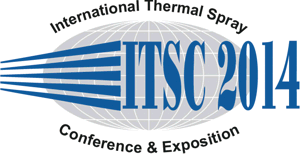
|
3900 |
|
Wednesday, May 21, 2014, Hall H1 & H2 4:36 PM "Young Professionals" |
|
Plasma sprayed Y2O3 coating on the CFRP with the aim of development of future mold material for the integrated circuit encapsulation |
|
Amirthan Ganesan* / Toyohashi University of Technology, JAPAN Hiroyuki Tokuyama / Toyohashi University of Technology, Japan Motohiro Yamada / Toyohashi University of Technology, Japan Masahiro Fukumoto/ Toyohashi University of Technology, Japan Satoshi Kitaoka/ Japan Fine Ceramics Center, Japan |
|
Epoxy molding compounds (EMCs) are used for encapsulating semiconductors. However, these compounds are susceptible to adhere strongly on the die material made up of alloy tool steel. The carbon fiber reinforced plastics (CFRP) would be a possible alternative to the alloy tool steel due to their high stiffness, strength, low weight and easy-to-handle. Importantly, the releasing force between the EMC and the CFRP mold surface must be kept to a minimum; otherwise the releasing force would be uneven during the release of IC packages, which would result damage of both the die and the encapsulated semiconductor. In order to improve the releasability of the mold, the rare-earth oxides having isoelectric points of the surface (IEPS) in the range 9 to 10 can be coated on the CFRP surface. It is proven that the releasing force of Y2O3 is 10 times lower than that of conventional mold materials such as alloy tool steels, since it has the IEPS values between 9 and 10. Therefore, in the present study, Y2O3 was used to deposit on the CFRP substrate using the atmospheric plasma spray technique. The coating adhesion strength and the releasability were evaluated. In addition, the bonding behavior between the Y2O3 and the CFRP was studied using electron microscopy. The results are promising and show the feasibility of making a ceramic coating on the CFRP surface with adequate adhesion strength. |